Cn-down > Domestic news > News content
2022-09-11 来源:金绒 浏览量:1764
summary
Recently, the price increase of upstream raw materials has pushed up the price of finished down, and the demand for white goose down has also continued to rise. For this reason, it is becoming more and more obvious that brands choose gray goose down. At present, there are few plans for large-scale goose farms, the bullish sentiment is strong, and the goose down is severely reduced.
Right now is the season of autumn clothing, and some new down jackets are also on the shelves, but the repeated high temperature makes the sales a bit embarrassing. On the contrary, the old off-season down jackets have huge discounts, so many consumers come to try them on and buy them.
In August, the demand for my country's export commodities cooled. Among them, textile exports were US$12.49 billion, down 8% month-on-month; apparel exports were US$18.486 billion, down 5.9% month-on-month. Analysts predict that the growth rate of exports in September is likely to further decline, which means that the second half of the year will rely more on domestic demand.
Exchange rate of USD to RMB: 6.8998
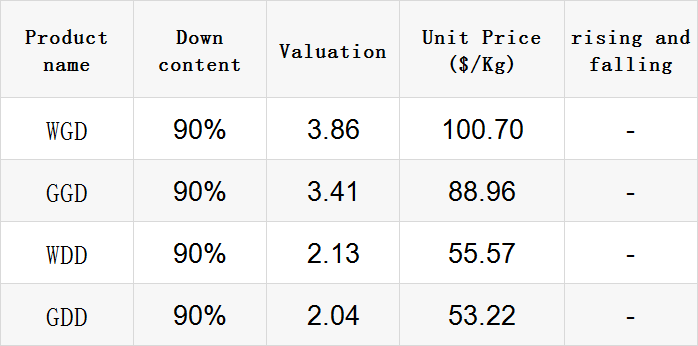
Exchange rate of USD to RMB: 6.9096
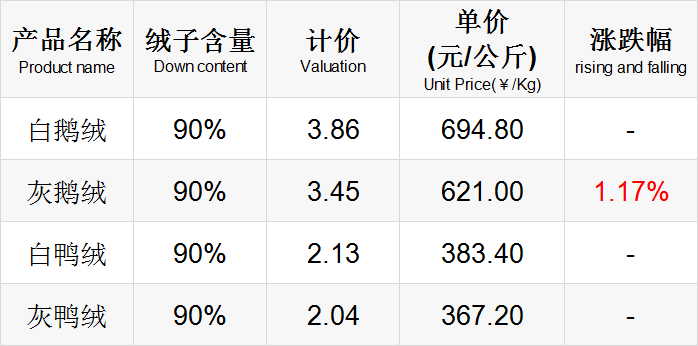
Exchange rate of USD to RMB: 6.916

Exchange rate of USD to RMB: 6.9148
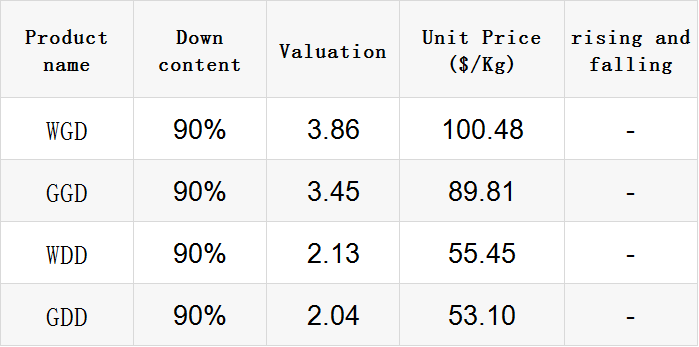
Exchange rate of USD to RMB: 6.9098
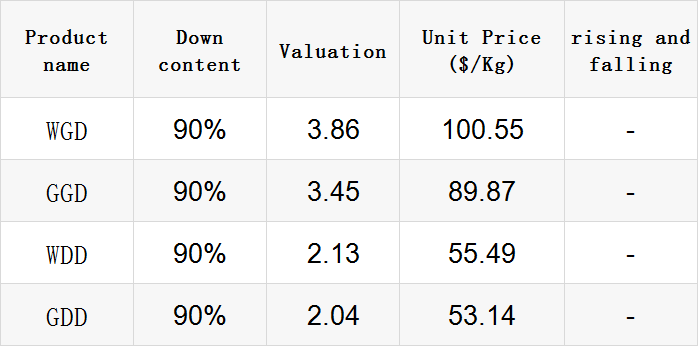
good news
According to Swiss media reports, the Swiss government has recently introduced a new regulation on the use of natural gas in winter, including provisions such as indoor heating temperature not exceeding 19 degrees Celsius and the prohibition of radiant heaters. Residents who violate the rules are punished with up to three years in prison.
It is worth noting that Switzerland is not the only European country asking its citizens to save energy to cope with gas shortages. As winter approaches, the European continent is collectively worrying about energy for the winter.

The Italian Ministry of Ecological Transition issued regulations on September 6 saying that the heating time in Italy in winter will be shortened by 15 days, the daily heating time will be reduced by 1 hour, and the indoor temperature limit of residential houses will be reduced from 20 degrees Celsius to 19 degrees Celsius. French President Emmanuel Macron also called on the French on the 5th to lower the indoor heating temperature in winter and reduce energy consumption.
Spanish Prime Minister Sanchez also said on the 6th that Spain is expected to usher in a winter with a more complicated energy situation, so residents must change their energy consumption habits and avoid energy waste.
On September 3, tens of thousands of Czechs took to the streets to protest against soaring energy prices. Its slogan, "Just two sweaters left for us," refers to rising energy prices and a potentially cold winter for Czechs.
The textile market has a very strong seasonal pattern. Every June and July are the seasonal lows of retail sales, which are basically the same in August and July, and gradually increase from September to December. Judging from the actual situation, there are consumption peaks on Double 11 and Double 12 every year in China, and there are double-festival consumption frenzy in Christmas and New Year overseas.
Although the overall performance of the textile market was weak in the early stage, with the arrival of September, the market actually showed signs of recovery. According to market understanding, autumn and winter fabrics have started to be launched one after another. In addition to elastic fabrics, down jacket fabrics such as Chun Yafang and Nisifang also have a certain sales volume.

The power cuts in Zhejiang were cancelled, and the start-up of the texturing looms continued to pick up significantly. As of September 2, the operating rate of texturing was 77%, that of weaving was 65%, and that of printing and dyeing was 72%. Terminal orders have a slight seasonal rebound, raw material supply is tight and difficult to fall, and downstream speculative raw material stocking has increased slightly, and stocking is around 10-30 days.
Although there are signs that the entire textile and apparel market is likely to improve marginally in September, it is still far from previous years. The social inventory of grey fabrics is still high, and the production enthusiasm of weaving manufacturers is still recovering. On the other hand, both the upper and lower industrial chains tend to wait for the peak season.
On August 29, the "2022 Zhejiang Pinghu Export Online Fair (Russia Station - Down Jacket Session)" held in Pinghu City came to a successful conclusion, which further promoted the integrated development of domestic and foreign trade, opened up the export market of the down jacket industry, and promoted the diversified cooperation of Pinghu's foreign trade.
The online trade fair organized and screened 18 high-quality down jacket companies in Pinghu City to participate in the exhibition. The products covered men's and women's down jackets, jackets, children's down jackets and other advantageous and characteristic products. At the same time, it organized two-way promotion and matching of exhibitors and buyers information in advance to fully meet the needs of different types of down jackets. purchasing needs.
Clothes, jackets, children's down jackets and other advantageous and characteristic products, and organize the two-way promotion and matching of exhibitors and buyers information in advance to fully meet different types of procurement needs.

In the current international environment, the demand for Chinese down jacket products in the Russian market has grown significantly, and the purchasing intention is relatively strong. Many exhibitors expressed that they have obtained obvious trade opportunities.
The person in charge of Polar Outdoor Clothing Co., Ltd. introduced: "We adopt a new process, there is no sewing thread, which can prevent the filler from running out, and the product is waterproof, windproof, and breathable. These features are favored by buyers. After the matchmaking meeting, the two parties emailed Frequent exchanges and fruitful harvests.”
bad news
On September 1, 2022, Beijing time, Steve Rendle, president and CEO of VF Corporation, announced in a letter to employees that the company is about to lay off employees. The group subsequently confirmed that this round of layoffs involved 600 positions in the group, accounting for about 2% of the company's existing employees.
VF Group is the parent company of many down jacket (trend) brands such as Supreme, Vans, The North Face, Timberland, etc. It has developed into one of the largest listed ready-to-wear companies in the world.
According to the financial report for the first quarter of fiscal year 2023 released by the group at the end of July this year, VF Group’s revenue in the first quarter was 2.262 billion US dollars (about 15.25 billion yuan), a year-on-year increase of 3%. However, due to a weak consumer environment and inflationary pressures, the group posted a net loss of US$56 million in the first quarter.

Affected by the epidemic, the Asia-Pacific region, where the Chinese market belongs, closed 14% of offline stores, with revenue of US$282 million, a year-on-year decrease of 20%, accounting for only 10% of VF Group's global revenue.
After the financial report was announced, Kevin Bailey, president of VF Group's global brands, said: "The focus of the future is the Chinese market, which is an important market that all brands cannot give up."
In addition, VF Group is also an important customer of down jacket factories in Asia.
According to data released by the General Administration of Customs on September 7, the total import and export value of China in August was 3.71 trillion yuan (RMB, the same below), an increase of 8.6% year-on-year, and the growth rate dropped significantly.
Among them, exports were 2.21 trillion yuan, a year-on-year increase of 11.8%; imports were 1.59 trillion yuan, a year-on-year increase of 4.6%. The trade surplus was 535.91 billion yuan, an increase of 40.4%.
Li Kuiwen, director of the Statistics and Analysis Department of the General Administration of Customs, said that in August, my country's imports and exports to countries along the "Belt and Road" increased by 23.8% year-on-year, driving the overall import and export growth by 6.9 percentage points. In the first eight months, the growth rate of imports and exports reached 10.1%, achieving a steady growth.
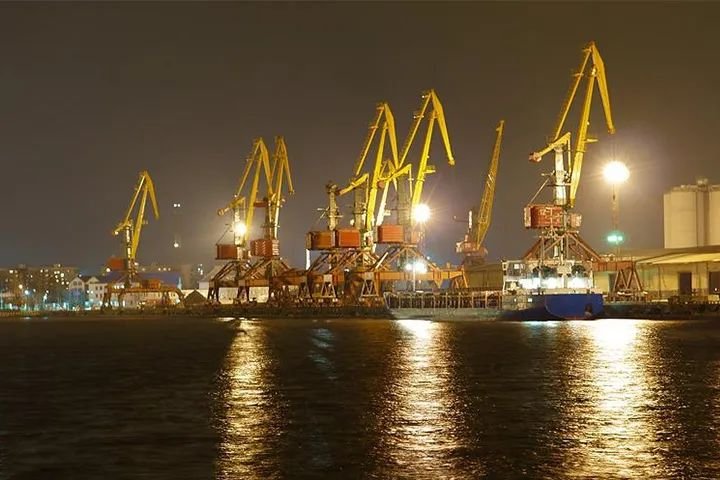
Analysts said that the effect of concentrated shipments in the early stage basically subsided in August. Against the background of the global economic slowdown, overseas demand for my country's export commodities may cool down. The current domestic demand for upstream raw materials is generally weak, which is a fundamental factor for the continued low growth rate of imports recently.
In August, my country's textile and apparel exports to the world reached 208.99 billion yuan, a year-on-year increase of 7.3%. Among them, textile exports were 84.27 billion yuan, an increase of 4.0% year-on-year; garment exports were 124.72 billion yuan, a year-on-year increase of 9.6%, a month-on-month decrease of 5.9%.
Analysts predict that the export growth rate in September may further drop to around 5.0%, which means that steady growth in the second half of the year will rely more on domestic demand. It is worth mentioning that the recent rapid decline in the exchange rate of RMB against the US dollar may have a certain driving effect on future exports. However, historical data suggest that the boost to exports from a devaluation of the renminbi should not be overestimated.
The island of Rouzic, on the western coast of France, is one of the few places in the world to gather gannets, but this summer, the number of gannets here has plummeted. Dozens of adult gannets have died on the island, starving 80 percent of their young, as the bird flu epidemic began raging in July.

Not only that, but bird flu has killed thousands of seabirds across the western coast of France. Meanwhile, the virus is spreading to the south. In June, the French Ministry of Agriculture had only just eased restrictions on raising poultry as the bird flu epidemic eased.
From November last year to May this year, more than 1,900 poultry were culled in France. According to official EU data, the French poultry industry ranks second in the EU member states in terms of output value. Affected by the previous round of bird flu, the output value of the French poultry industry is expected to drop by nearly 10% this year.
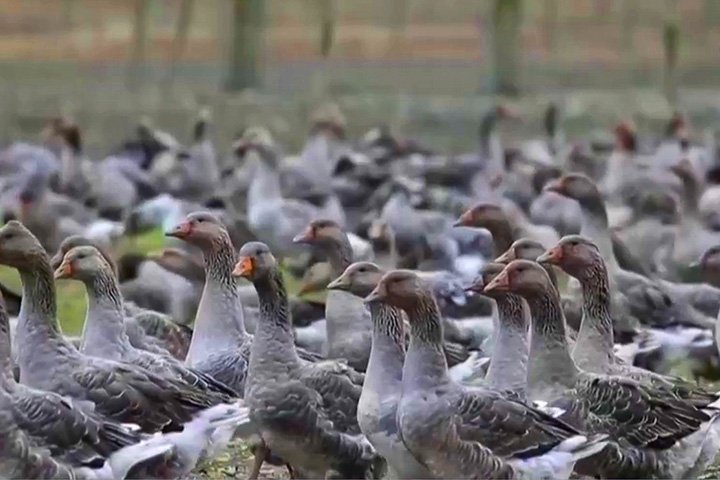
Usually, autumn and winter are the peak seasons for bird flu, but this year's epidemic has spread rapidly as early as spring and summer, and some people are worried that it will continue to spread.
The bird flu epidemic in the Midwest of the United States has resurfaced after months of silence, and earlier than the authorities expected. In the past week, cases of bird flu have been reported in Indiana, Minnesota, North Dakota and Wisconsin, as well as outbreaks in many West Coast states during the summer.
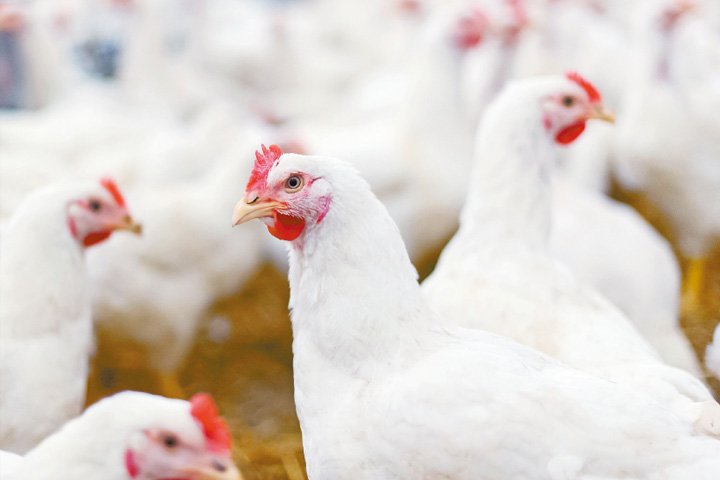
The Ohio Department of Agriculture confirmed that as many as 3 million laying hens on the farm needed to be euthanized after an outbreak of bird flu at a large laying hen farm in Defiance County, Ohio.
In addition, the bird flu outbreak in the United States earlier this year caused the price of eggs and poultry to soar, and the situation only eased slightly in June. Officials had earlier warned that bird flu outbreaks could return in the fall.
 热门排行
中国三大羽绒生产基地之—广东吴川
全球最奢侈羽绒服排行
一件羽绒服需要多少只鸭子的羽绒?
飞丝是什么?能代替羽绒?别被骗了,三种方法让你告别假羽绒服!
2017羽绒原料价格一路上涨,究竟为何?
你的羽绒服为什么钻绒?涨知识了
羽绒被的价格一般是多少 通过成本看羽绒被价格
中国羽绒服四大品牌调查:到底谁才是最强王者?
羽绒金网:羽毛、羽绒、毛绒计价
《羽绒羽毛》、《羽绒羽毛检验方法》新版标准发布,2017年7月1日实施
热门排行
中国三大羽绒生产基地之—广东吴川
全球最奢侈羽绒服排行
一件羽绒服需要多少只鸭子的羽绒?
飞丝是什么?能代替羽绒?别被骗了,三种方法让你告别假羽绒服!
2017羽绒原料价格一路上涨,究竟为何?
你的羽绒服为什么钻绒?涨知识了
羽绒被的价格一般是多少 通过成本看羽绒被价格
中国羽绒服四大品牌调查:到底谁才是最强王者?
羽绒金网:羽毛、羽绒、毛绒计价
《羽绒羽毛》、《羽绒羽毛检验方法》新版标准发布,2017年7月1日实施
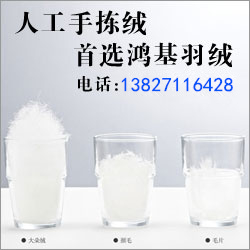 推荐阅读
“吴川力量”助中国羽绒接轨世界
中国三大羽绒生产基地之—广东吴川
中羽协第二期新国标培训班 在“羽绒之乡”广东吴川成功举办
羽绒之乡:贵港桥圩镇将打造旅游休闲特色小镇
广西贵港桥圩镇:打造中国羽绒休闲旅游特色小镇
羽绒金网:羽毛、羽绒、毛绒计价
羽绒别急着收 中央气象台发布寒潮蓝色预警 部分地区降温超12℃
上海消保委检测 千元鹅绒被用鸭毛绒填充
冻哭丨降温10℃!鸡年首个寒潮预警来袭,你准备好了吗?
传统羽绒产业如何实现转型升级?四川玉泉镇产业集群发展
推荐阅读
“吴川力量”助中国羽绒接轨世界
中国三大羽绒生产基地之—广东吴川
中羽协第二期新国标培训班 在“羽绒之乡”广东吴川成功举办
羽绒之乡:贵港桥圩镇将打造旅游休闲特色小镇
广西贵港桥圩镇:打造中国羽绒休闲旅游特色小镇
羽绒金网:羽毛、羽绒、毛绒计价
羽绒别急着收 中央气象台发布寒潮蓝色预警 部分地区降温超12℃
上海消保委检测 千元鹅绒被用鸭毛绒填充
冻哭丨降温10℃!鸡年首个寒潮预警来袭,你准备好了吗?
传统羽绒产业如何实现转型升级?四川玉泉镇产业集群发展